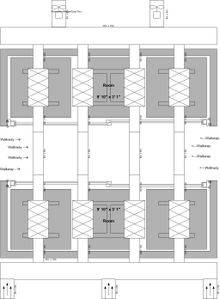Lets try and make this a Security MegaThread!
EDIT:!!!!!
Good call Rasta!
I will try to break it down as best I can...
1) Smell
1a) Carbon Scrubbers
1b) Ozone Generators
1c) Odor Neutralizers (think vaportek)
2) Heat Exhaust
2a) Exhausting into the Sewer
2b) Through the Chimney
2c) Through a Window
2d) Home-made Vents
2e) Into the Ground
2f) Secondary Location Exhaust
2g) other ideas
3) Sound
3a) Fan Noise
3b) Moving Air Noise
3c) Water Noise
3d) Misc Noise
4) Room Design
4a) Reflective Materials
4b) Sealed vs un-Sealed
4c) "Air Wall" (IE room within a room)
4d) Accidents can happen
5) Security Systems
5a) Video Surveillance
5b) Other Security Measures
5c) Counter Intelligence
5d) DIY type-stuff
6) Bills
6a) Electric Bills
6b) Renting a house
6c) Water Bills
7) Securing your digital Presence
7a) Forum surfing
7b) buying seeds online
7c) Phone Conversations
7d) etc.
8) Tin hat time
8a) X-ray vision
8b) everything else tin-hat like!
9) What have I missed?!
9a) - 9?) you tell me!
Please do not post until I have enough posts right after this one for the information to be added. (which probably means ~10 minutes total) (thank you!)
FYI, not everything is going to be cited right away, as it take a shit-ton of time to go through posts / threads here and re-find all this data, so any help with finding links to pertinent information would be greatly appreciated!
EDIT:!!!!!
Raistlin Majere said:#1 keep your mouth SHUT !!
biggest security issue i can think of and its not added ?
good luck w/the thread

Good call Rasta!
I will try to break it down as best I can...
1) Smell
1a) Carbon Scrubbers
1b) Ozone Generators
1c) Odor Neutralizers (think vaportek)
2) Heat Exhaust
2a) Exhausting into the Sewer
2b) Through the Chimney
2c) Through a Window
2d) Home-made Vents
2e) Into the Ground
2f) Secondary Location Exhaust
2g) other ideas
3) Sound
3a) Fan Noise
3b) Moving Air Noise
3c) Water Noise
3d) Misc Noise
4) Room Design
4a) Reflective Materials
4b) Sealed vs un-Sealed
4c) "Air Wall" (IE room within a room)
4d) Accidents can happen
5) Security Systems
5a) Video Surveillance
5b) Other Security Measures
5c) Counter Intelligence
5d) DIY type-stuff
6) Bills
6a) Electric Bills
6b) Renting a house
6c) Water Bills
7) Securing your digital Presence
7a) Forum surfing
7b) buying seeds online
7c) Phone Conversations
7d) etc.
8) Tin hat time
8a) X-ray vision
8b) everything else tin-hat like!
9) What have I missed?!
9a) - 9?) you tell me!
Please do not post until I have enough posts right after this one for the information to be added. (which probably means ~10 minutes total) (thank you!)
FYI, not everything is going to be cited right away, as it take a shit-ton of time to go through posts / threads here and re-find all this data, so any help with finding links to pertinent information would be greatly appreciated!
Last edited:








